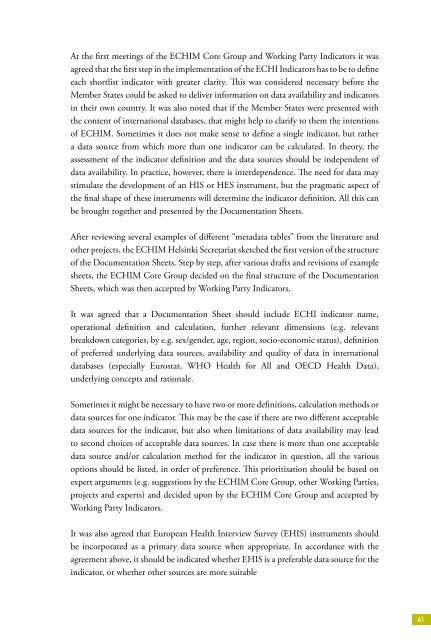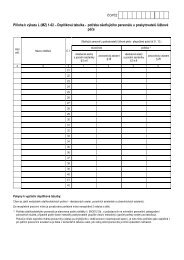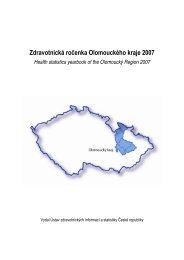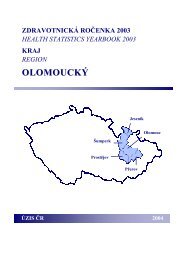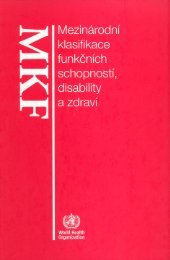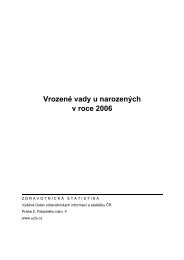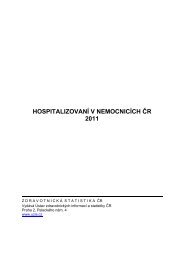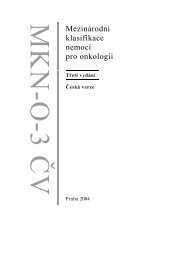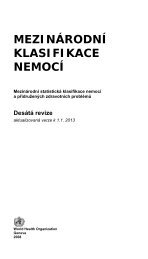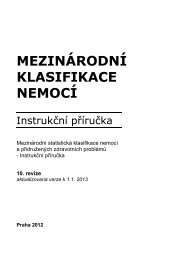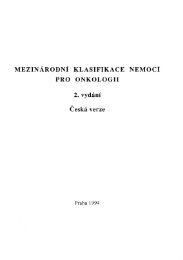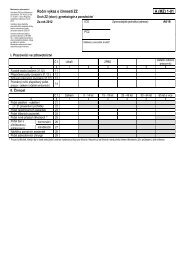ECHIM Final Report
ECHIM Final Report
ECHIM Final Report
You also want an ePaper? Increase the reach of your titles
YUMPU automatically turns print PDFs into web optimized ePapers that Google loves.
At the first meetings of the <strong>ECHIM</strong> Core Group and Working Party Indicators it was<br />
agreed that the first step in the implementation of the ECHI Indicators has to be to define<br />
each shortlist indicator with greater clarity. This was considered necessary before the<br />
Member States could be asked to deliver information on data availability and indicators<br />
in their own country. It was also noted that if the Member States were presented with<br />
the content of international databases, that might help to clarify to them the intentions<br />
of <strong>ECHIM</strong>. Sometimes it does not make sense to define a single indicator, but rather<br />
a data source from which more than one indicator can be calculated. In theory, the<br />
assessment of the indicator definition and the data sources should be independent of<br />
data availability. In practice, however, there is interdependence. The need for data may<br />
stimulate the development of an HIS or HES instrument, but the pragmatic aspect of<br />
the final shape of these instruments will determine the indicator definition. All this can<br />
be brought together and presented by the Documentation Sheets.<br />
After reviewing several examples of different “metadata tables” from the literature and<br />
other projects, the <strong>ECHIM</strong> Helsinki Secretariat sketched the first version of the structure<br />
of the Documentation Sheets. Step by step, after various drafts and revisions of example<br />
sheets, the <strong>ECHIM</strong> Core Group decided on the final structure of the Documentation<br />
Sheets, which was then accepted by Working Party Indicators.<br />
It was agreed that a Documentation Sheet should include ECHI indicator name,<br />
operational definition and calculation, further relevant dimensions (e.g. relevant<br />
breakdown categories, by e.g. sex/gender, age, region, socio-economic status), definition<br />
of preferred underlying data sources, availability and quality of data in international<br />
databases (especially Eurostat, WHO Health for All and OECD Health Data),<br />
underlying concepts and rationale.<br />
Sometimes it might be necessary to have two or more definitions, calculation methods or<br />
data sources for one indicator. This may be the case if there are two different acceptable<br />
data sources for the indicator, but also when limitations of data availability may lead<br />
to second choices of acceptable data sources. In case there is more than one acceptable<br />
data source and/or calculation method for the indicator in question, all the various<br />
options should be listed, in order of preference. This prioritisation should be based on<br />
expert arguments (e.g. suggestions by the <strong>ECHIM</strong> Core Group, other Working Parties,<br />
projects and experts) and decided upon by the <strong>ECHIM</strong> Core Group and accepted by<br />
Working Party Indicators.<br />
It was also agreed that European Health Interview Survey (EHIS) instruments should<br />
be incorporated as a primary data source when appropriate. In accordance with the<br />
agreement above, it should be indicated whether EHIS is a preferable data source for the<br />
indicator, or whether other sources are more suitable<br />
41


